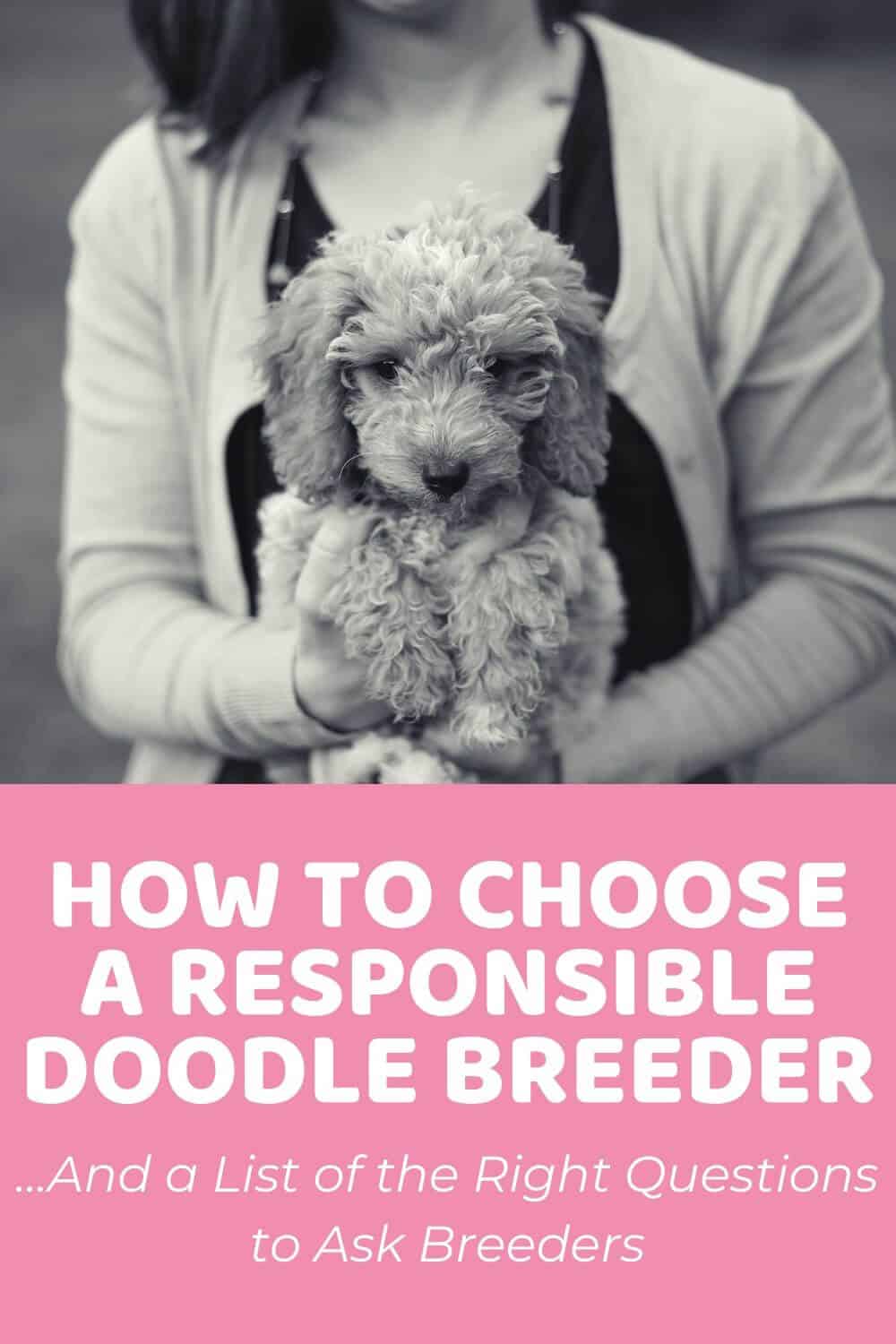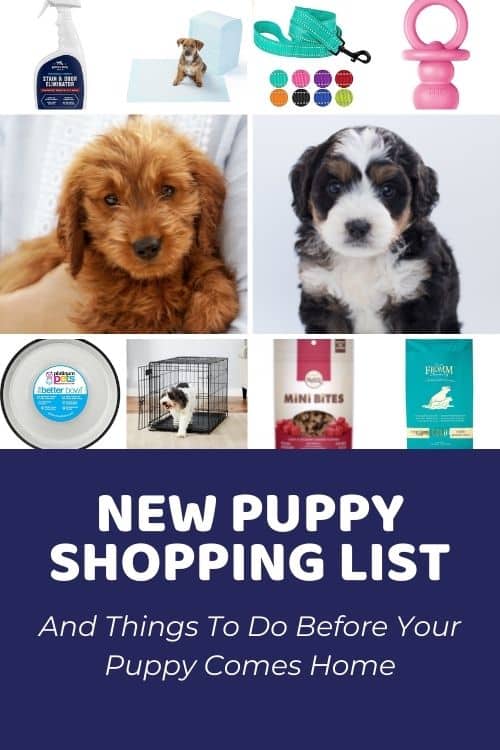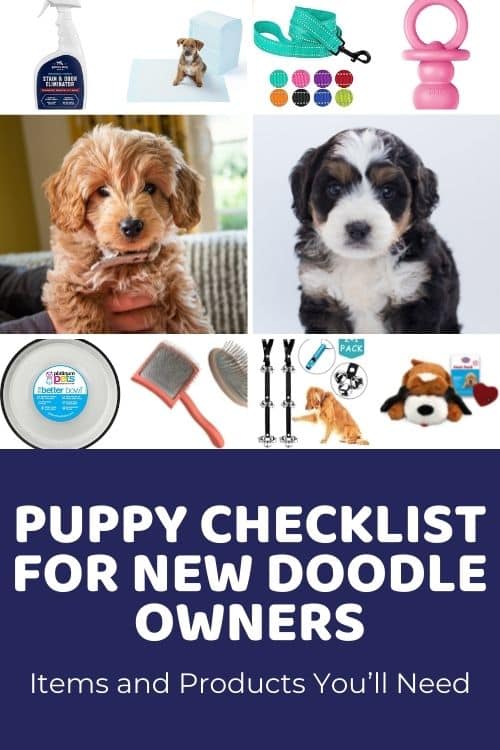Picking a puppy from a litter is going to be one of the hardest decisions during the adoption process. Obviously, there’s the whole process of deciding what breed you’re after, then choosing a great breeder. But when it comes to picking your puppy, it can get really tough. In this guide, we’re going to tell you how to pick a puppy from a litter. We’ve prepared some excellent tips for you that’ll help guide your decision in a responsible and constructive manner. By the end of this article, you’ll know exactly what questions you should ask yourself and the breeder, helping you adopt the most perfect companion for many years to come.
Table of Contents
- How to Pick a Puppy From a Litter
- When Should You Bring Your New Puppy to the Vet for the First Time?
- How To Pick A Puppy From A Litter: Frequently Asked Questions
- How To Pick A Puppy From A Litter: Final Thoughts
How to Pick a Puppy From a Litter
So, how do you pick a puppy from a litter? Obviously, it can be as simple as falling head over heels in love with one particular puppy from the bunch. Something just clicked, and you know that this is the pup for you. However, it’s not always that simple, nor should it be.
After all, your new furbaby will be by your side for the next 10 to 15 years (or even more if you’re lucky). You’ll want to make sure that your new puppy comes from healthy parents, they’ve been well-taken care of, and that their temperament is suitable for being a companion dog.
But how can you make sure of that? Here are some of the key things you should consider when picking a puppy from a litter.
Do Your Research
How to choose a puppy from a litter? First, you’ll want to make sure that you’ve thoroughly studied the breeder’s website, social media, and checked their credentials. Always, always, always do your research and learn as much as you possibly can.
You’ll also want to double check that the litters are being bred from health and DNA tested parents. Ethical breeders have no problem with sharing their health certifications and test results with you, so that’s always something you can ask if you’re unsure.
Once you’ve decided to contact a breeder, be sure to ask lots of questions. Talk to the breeder about the puppies’ usual day-to-day life. The breeder should also inform you about the exact diet that their puppies eat, and what type of vaccinations and dewormings they’ve received and when. All of this information is also crucial for your veterinarian, who’ll then be able to continue monitoring your puppy’s health and keep them up-to-date on vaccinations and dewormings.
Analyze Their Appearance and Overall Wellbeing
Once it’s time for you to meet the puppies, either via video calls or in person, be sure to analyze the puppies’ and the mama’s appearance.
Do the mother and puppies seem happy? Do they seem healthy and well-fed? How do their coats look? Are they shiny and groomed, or dull and rugged? Are there any visible bald spots or even injuries? Do the puppies move freely or is anyone limping or having trouble getting up? Do the puppies seem dirty?
You’ll also want to check for any other signs of illness, such as wheezing and coughing, or a runny nose. The puppies’ eyes should look clear, with no redness, greasiness, or discharge, and their ears should also look healthy with no signs of irritation or discharge.
By observing the appearance of the puppies and the mama you’ll gain a much better understanding about how the dogs are being treated and how healthy they potentially are.
We urge you to find another breeder if you do notice any worrying signs.
Observe The Mama and Pups In Action
Now that you’ve talked to the breeder and gotten acquainted with the puppies, you’ll want to closely observe each puppy and see how they interact with their littermates and mama. You’ll also want to pay attention to their overall behavior.
For instance, are the puppies active and outgoing or do they seem lethargic and withdrawn? Are the puppies curious and engaged in activities? How’s the mother behaving? Does she seem well? Again, study the movements and observe anything and everything. If you notice that anything’s off, it could indicate that the puppies and dogs aren’t being treated particularly well, or that there’s an underlying medical issue.
Observing the pups in action is also a great way to determine which of them might be suitable for you personally. The simple answer to the question of how to pick a puppy from a litter is that you’ll want to adopt a puppy that can fully thrive in your household. If you lead a relatively quiet and calm lifestyle, your best match would likely be a calmer pup that isn’t bouncing off the walls at all times.
Not only is it important that you ask as many questions as possible to the breeder, it’s also vital that the breeder gets to know you and your daily life to understand which puppy might be most suitable for you. After all, they’ve been with the puppy from the start, and have gotten to know them and their personality.
In fact, many responsible breeders conduct temperament testing. This ensures that each pup gets adopted by the most suitable forever family. So, it only makes sense to pick a puppy whose temperament meshes well with your own personality, lifestyle, and family dynamics.
Pay Attention to the Environment and How Puppies Fit In
Needless to say, you’ll also want to closely observe the environment where the puppies are being raised in. Where do the puppies spend the majority of their time? Do they live with the breeder indoors or are they kept in cages? What’s the temperature like? Is it clean and safe?
You’ll also want to analyze how the puppies behave around people. Are they used to a home environment? Do they get scared or anxious around people? How do they react to usual household noises and situations, such as the TV, doorbell, or vacuuming?
Moreover, ask the breeder about the puppies daily activities. Does the breeder handle the pups daily? Do the puppies get to interact with children, elderly, adults, and other dogs and cats? Are they exposed to household appliances (from a safe distance)? Have they been on car rides?
Picking a puppy from a litter based on their temperament and personality is one thing, but you’ll also want to make sure that your new pup is well-rounded and socialized. Ethical breeders generally raise their puppies in a home environment, oftentimes around children and other pets. They also safely expose them to a variety of new experiences, sights, and sounds to build confidence. All of this sets the puppies up for success and helps them learn appropriate behaviors and interactions with others around them.
When Should You Bring Your New Puppy to the Vet for the First Time?
Now that you’ve figured out how to pick a puppy from a litter, consider the next steps you’ll take after adopting your new puppy. Most importantly, any new puppy owner should take their dog for a vet exam as soon as possible. We’d advise you to take your new puppy for the first vet exam the day you pick them up from the breeder.
Reputable breeders usually provide an initial 72-hour health guarantee and a one or two-year genetic health guarantee. The 72-hour health guarantee lets you take your new puppy to its first vet checkup to determine if they’re in full health as promised by the breeder.
During your puppy’s first vet visit, your veterinarian will examine the puppy’s eyes, ears, and teeth, listen to their heart, check their stomach and overall body composition, lymph nodes, and look for fleas and ticks. Don’t forget to give your vet all of your puppy’s health records from the breeder, including information on vaccines and dewormings. If necessary, your veterinarian will already be able to administer your pup its next vaccines or deworming medications.
How To Pick A Puppy From A Litter: Frequently Asked Questions
Which Puppy Should I Get From The Litter?
Ah, the age-old question of “how to choose a puppy from a litter?”. Although you might have an idea of what your new puppy should look like, we do recommend that your decision isn’t solely based on appearance. Instead, carefully think about what your life looks like, realistically. Then, consider what type of dog would fit into your daily life.
Obviously, you’ll also want to choose a puppy that comes from a responsible breeder and from healthy parents. Pay attention to the environment where the puppies are raised, how they behave, how they interact with people and their littermates, and their general appearance. Our guide on How To Choose A Responsible Breeder is another helpful resource we recommend you check out.
How Do You Pick A Puppy From A Litter Personality Wise?
Choosing a puppy from a litter can be much easier once you’ve identified what your own life looks like, and what you’re looking for in a pet. For instance, if you have an active lifestyle and a more lively household, a more boisterous pup could be a better fit. Likewise, if you’re looking for a more relaxed lapdog, a calmer pup from the litter would be more suitable for you.
Should You Pick The Biggest Puppy In A Litter?
There’s a common misconception that you should choose the biggest puppy in the litter, as if the smallest pups are somehow much unhealthier. At the end of the day, if you adopt your puppy from an ethical breeder, they should be healthy regardless of their size.
Nonetheless, you’ll want to monitor your puppy’s growth for the upcoming months to keep track of their health and development. Growing too fast or too slow can both have detrimental effects on a puppy’s health, so that’s something worth remembering.
How To Pick A Puppy From A Litter: Final Thoughts
When it comes to picking a puppy from a litter, being well-prepared and educated will give you a great starting point. We hope we managed to provide an answer to your question “how to pick a puppy from a litter?”, helping you make the right decision. After all, it’s a huge commitment for the next 10 to 15 years, if not longer. This way, you’ll have the perfect companion by your side for many years to come.
Learn How to Care for Your Doodle Puppy!

Perfect for first-time Doodle parents, get ALL your questions answered, including questions new Doodle parents don’t even think to ask.
Plus, get $700 worth of Bonus Materials for FREE, including:- Doodle Parenthood Community and Support Group ($190 value)
- Doodle Puppy Growth Tracker ($20 value)
- EMERGENCY Cheatsheet: When To Call The Vet Immediately ($50 value)
- HELP! Button ($145 value)
- And SO MUCH MORE!








